
The Church of St. Sebald (Kirche St. Sebald / St. Sebald) or Sebaldkirche (Sebalduskirche / Sebalduskirche, Zebalduskirche) is the oldest parish church in Nuremberg and one of the three most prominent church buildings in the city.
The other two significant churches are the Church of the Virgin Mary or Frauenkirche and the Church of St. Lawrence (Kirche St. Lorenz).
The church was consecrated in honor of St. Sebald. Sebald was a hermit who probably lived in the Nuremberg area in the 8th century. Saint Sebald is the patron saint of Nuremberg.
Sebald's Church is the oldest (since 1525) Lutheran Protestant parish church in the city. Today the church belongs to the Evangelical Lutheran Church in Bavaria.
The proximity of the church to the Nuremberg Town Hall underlines its importance as a "cathedral church", although this is not noticeable in the modern landscape of the city.
The construction of the Late Romanesque basilica with two choirs began in 1225-1230, on the foundation of the walls of the previous church, presumably dedicated to St. Peter.
The shrine received the status of a parish church in 1255 and was completed by 1273-1275.
By 1379, the side aisles of the church were expanded, the towers were raised in the high Gothic style and the altar of the late Gothic hall was built. Two towers were added in the 15th century.
The church suffered during the Second World War. Then it was restored.
Since the church has been rebuilt and expanded during its history, there are different styles in its architectural exterior and interior appearance: Gothic, Romanesque, baroque.
The exterior of the church is notable for two tall bell towers, several portals, sculptures and decorations.



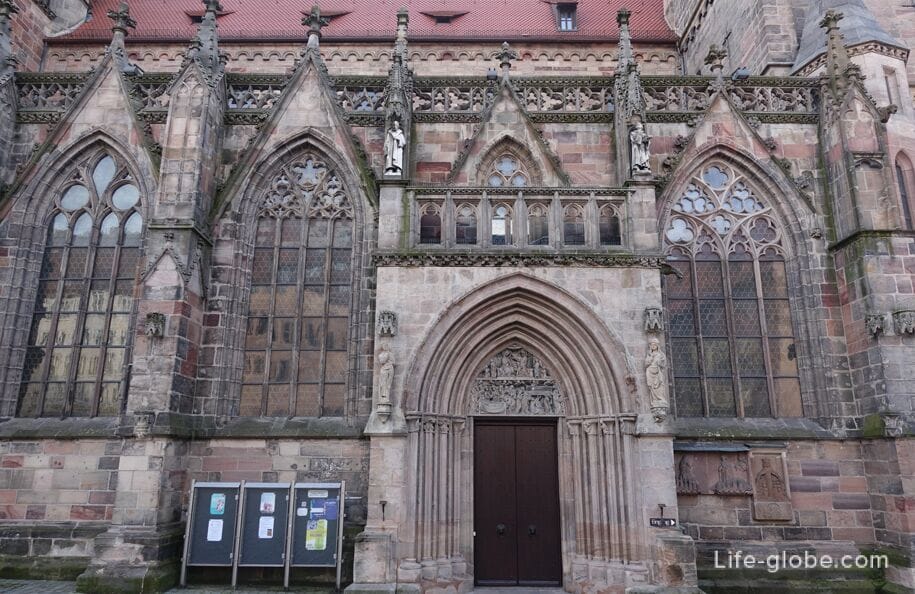

Especially popular is the Schreyer-Landauer Epitaph (Schreyer-Landauer-Epitaph), located near the northeast end of the building.
The sandstone relief depicts three parts from the story of the Passion and Easter. In 1490, the church's caretaker Sebald Schreyer and his nephew Mattheus Landauer commissioned Adam Kraft to make a memorial image of sandstone on the grave of their families. The master finished the work on Easter 1492.
The right panel of the epitaph depicts Jesus carrying a cross among soldiers and onlookers, the middle panel shows the burial of Jesus by women, John, Joseph of Arimathea and Nicodemus, and the left panel depicts the risen Christ with his victory flag. On the right edge of the middle panel there are two men standing with instruments of torture, which in medieval piety were understood as the so-called weapon of Christ, with which he defeated death. These two figures have been identified again and again with Sebald Schreyer and Adam Kraft, but this fact has never been proven.
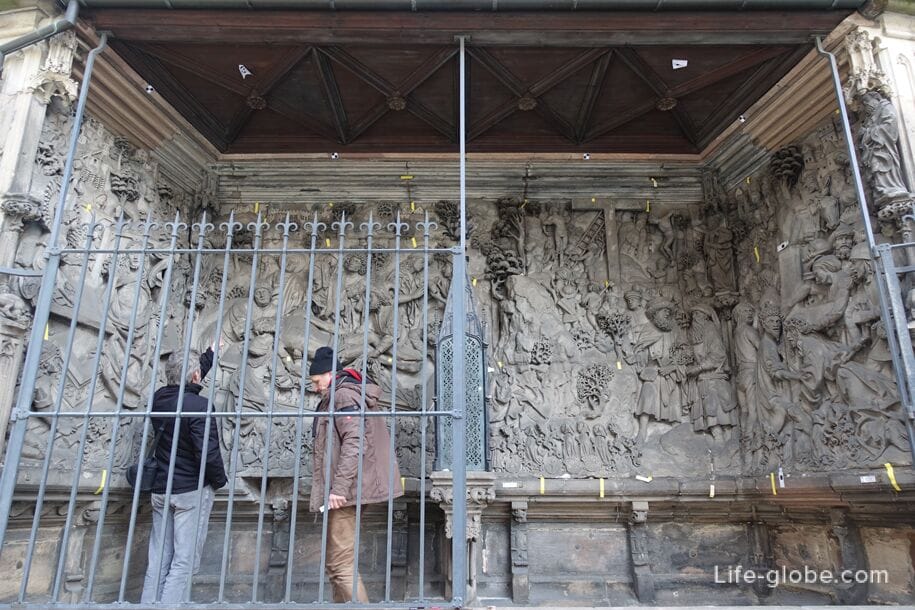

The interior of the church has three naves separated by powerful columns with arched ceilings.
The interior reflects more than seven centuries of faith and the history of Nuremberg art.
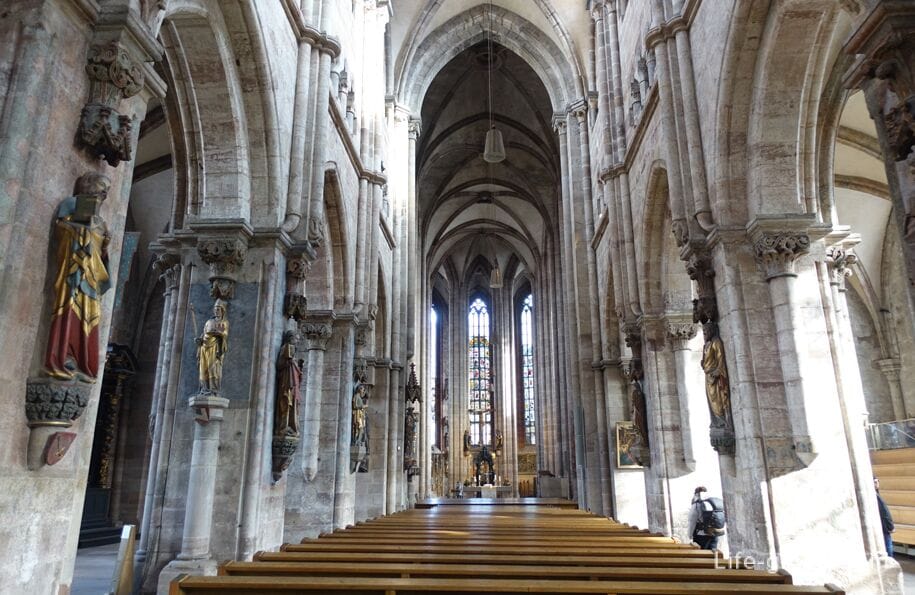
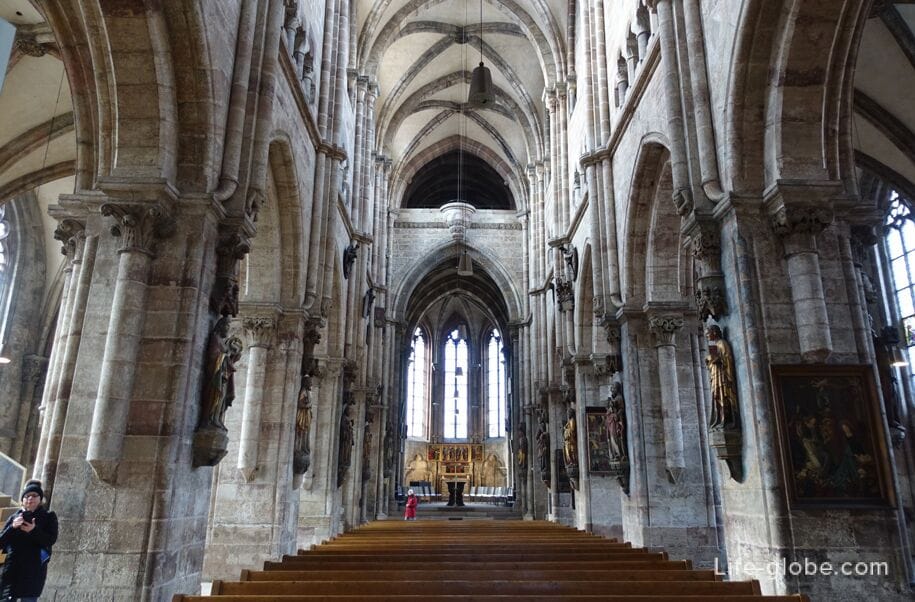

A special place in the church is occupied by the grave (Sebaldusgrab), in which, as they say, the relics of St. Sebald are kept. The reliquary was built in 1391 by the jeweler Fritz Habelsheimer the Elder.
Peter Fischer designed the exterior in cast bronze in 1488 in the Gothic style and completed it with his sons in 1519, with elements of the Italian Renaissance.
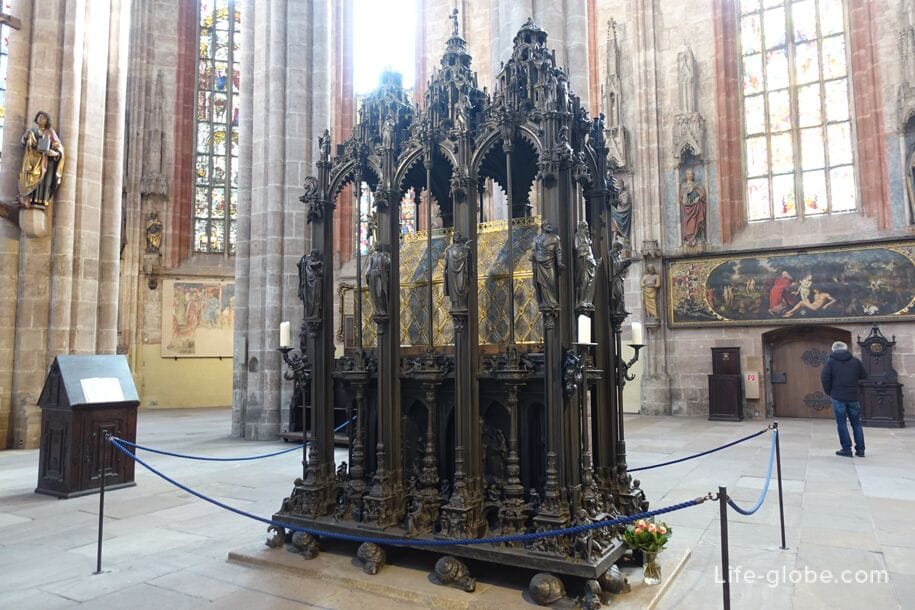

Peter's altar with an altarpiece (Petersaltar). Some parts of the altar are lost.
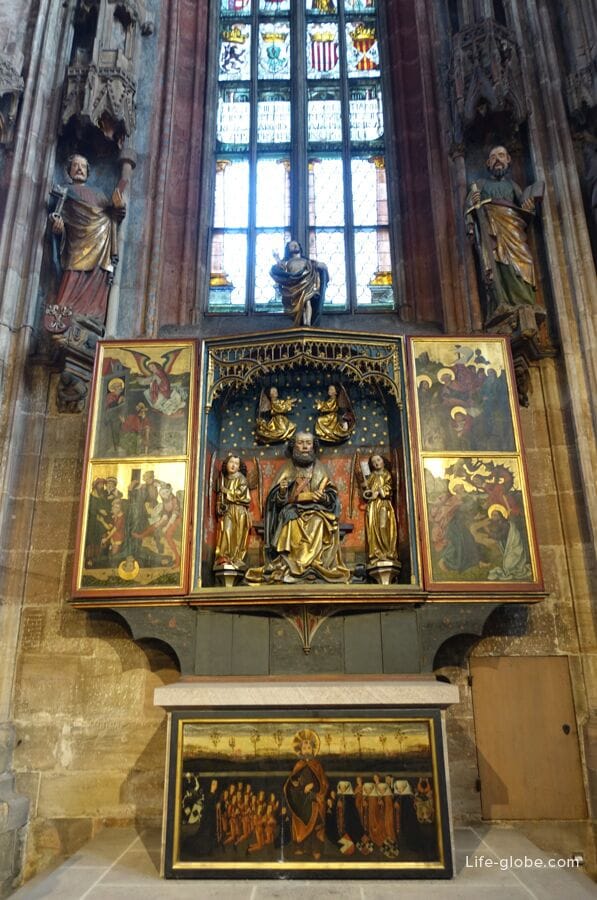
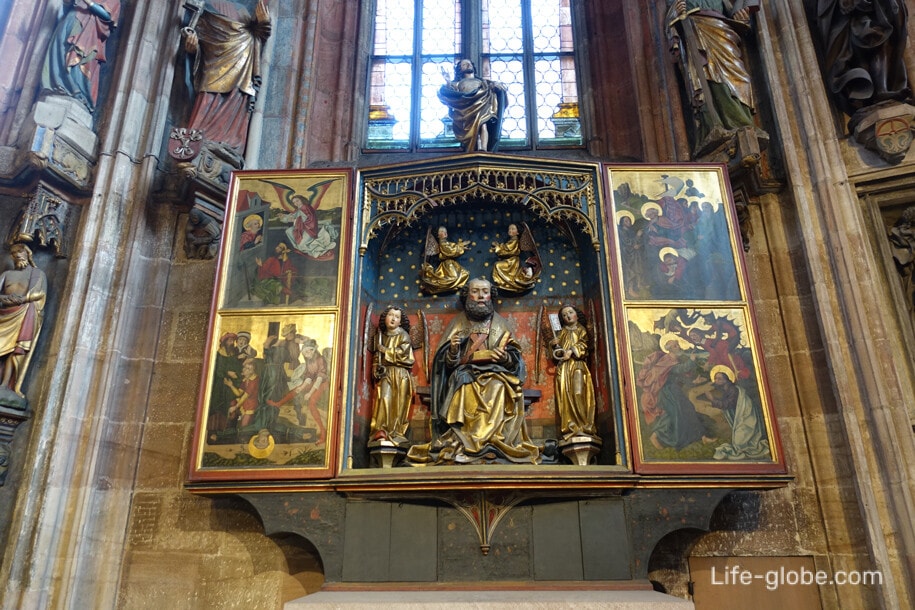
Catherine's Altar (Katharinenaltar), reflecting the legends surrounding the life and death of St. Catherine.
The altar was made between 1462 and 1464 and reconstructed in the old place since 2004. In closed form, it shows the worship of kings and the dragon battle of St. George.
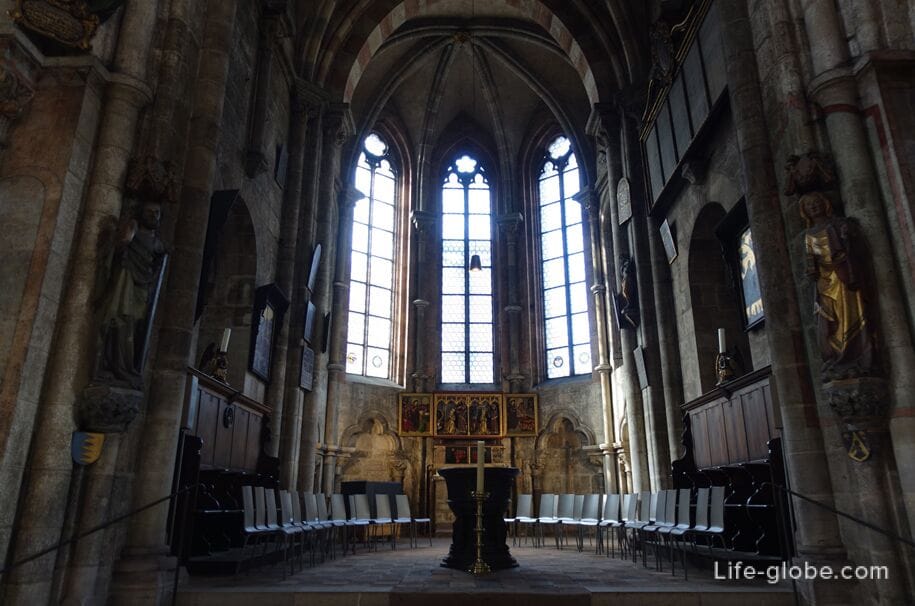
The Crucifixion group (Kreuzigungsgruppe) with figures of the crucified Christ and the Mother of Sorrow. The figures were moved from the Frauenkirche to the Sebalduskirche in 1663. Since then, they have formed the crucifixion group over the former main altar together.
While the figures of Mary and John were created in 1507-1508, the image of the crucified Jesus appeared much later. It was only at the beginning of the 20th century that it became clear that the crucifixion was made by Faith Stoss.
All three linden figures are extremely dramatic. The wound on the side shows that the crucified man is already dead, his facial features reflect the pain. Mary's hands demonstrate the same tension between pain and redemption. John is crying, but trustfully holds the Gospel in front of him.


An ornate sacrament cabinet (Sakramentsschrank), which gives an idea of how important the piety of the Lord's Supper became in the late Middle Ages.
Surrounded by a wall during the war, the original door with fittings has been preserved.
On the sides of the cabinet are the patrons of the eastern choir of the church, Peter (with a key) and Sebald (as a pilgrim with his church in his arms). The burial of Jesus is depicted below. The upper part depicts God the Father himself offering his crucified Son to mankind for their salvation, as it is repeated when accepting the host at the Lord's Supper.
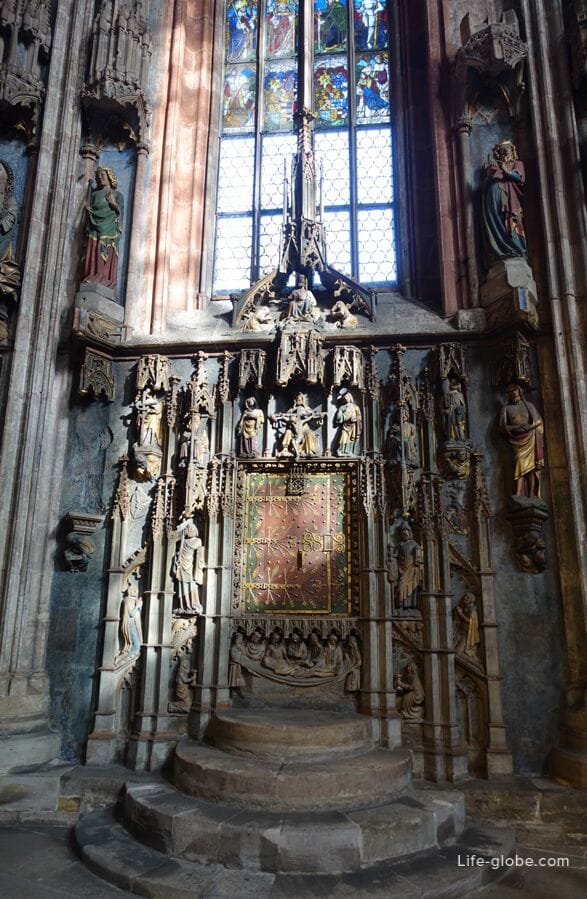
A fragment of the fresco "Paul before the Jews" (Paulus vor den Juden), circa 1380, which was found during restoration in 1905 behind the altar of Peter under plaster.
The fresco depicts rarely depicted scenes from the life of Paul. Today, after several years of restoration, a fragment of the fresco is again presented to the parishioners. In the right part of the image, Jews discuss Paul with the pro-Roman vassal king Herod Agrippam II. Pointed hats, similar to those worn by Jewish men in the Middle Ages, are clearly visible. The left half shows the condemnation of the Apostle Paul before the Roman Emperor Nero. The right and left edges of the image are missing.
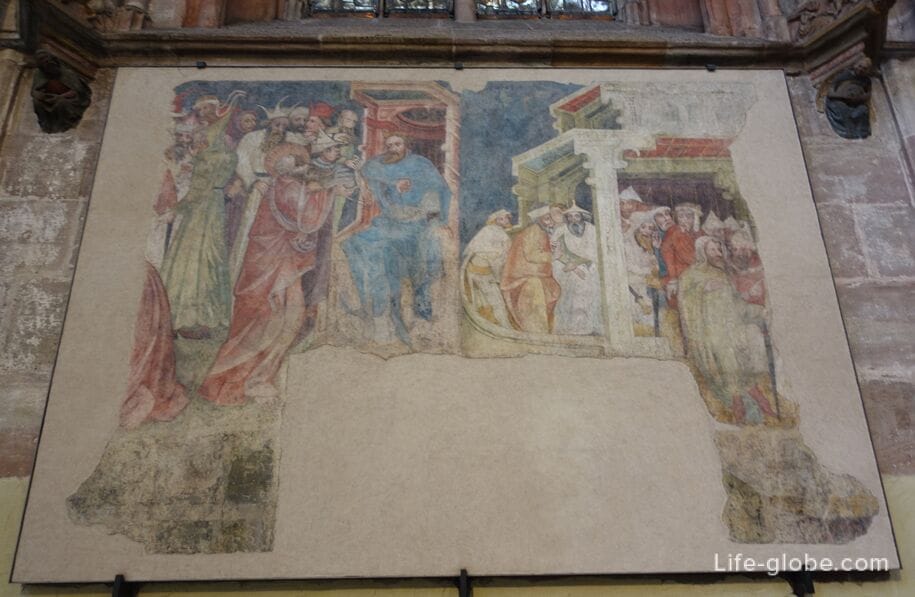
The epitaph of the Volkamer (Volckamer Epitaph). Shortly after returning to Nuremberg, Feit Stoss completed his work on the Volkamera Memorial Foundation south of the eastern choir of the church (1498-1499).
Between the Lord's Supper and the conclusion, in the center of the stone relief is the prayer of Jesus in the Garden of Gethsemane. The foundation and choice of scenes were closely related to the late Medieval piety and forms of worship of that time. The emphasized humanity and agony of the figure of Jesus in the Gethsemane scene, as it were, give believers the opportunity to put themselves in Christ's place, follow His example and pray during disasters.
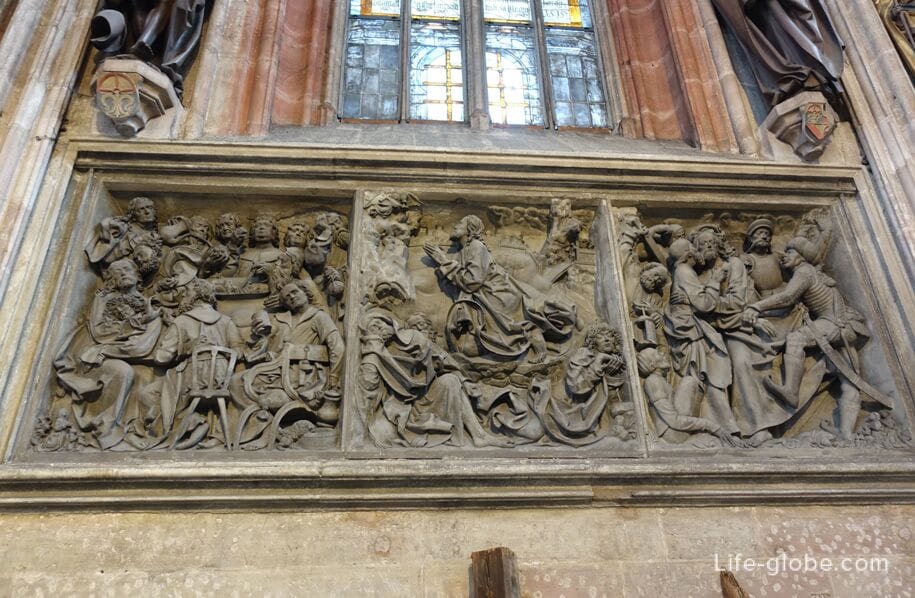
Also notable in the walls of the church of St. Sebald are: the figure of the Apostle Andrew (Apostel Andreas) from linden (about 1506), the epitaph of Lorenz Tucher (Tuc-Epitaph), the figure of the Madonna in Radiant light (Strahlenkranzmadonna) in 1438, frescoes, bas-reliefs, paintings, sculptures, stained glass windows, pulpit, organ, etc.
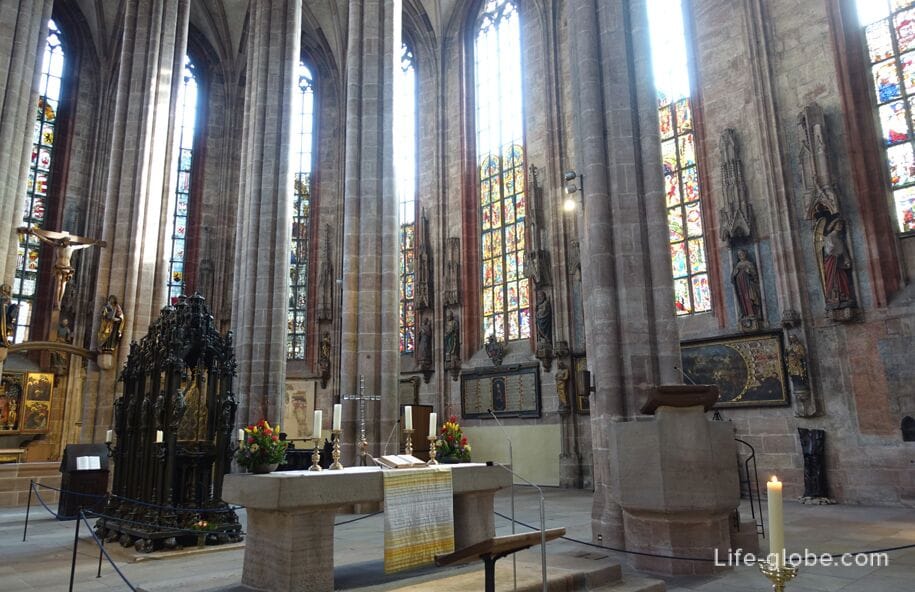
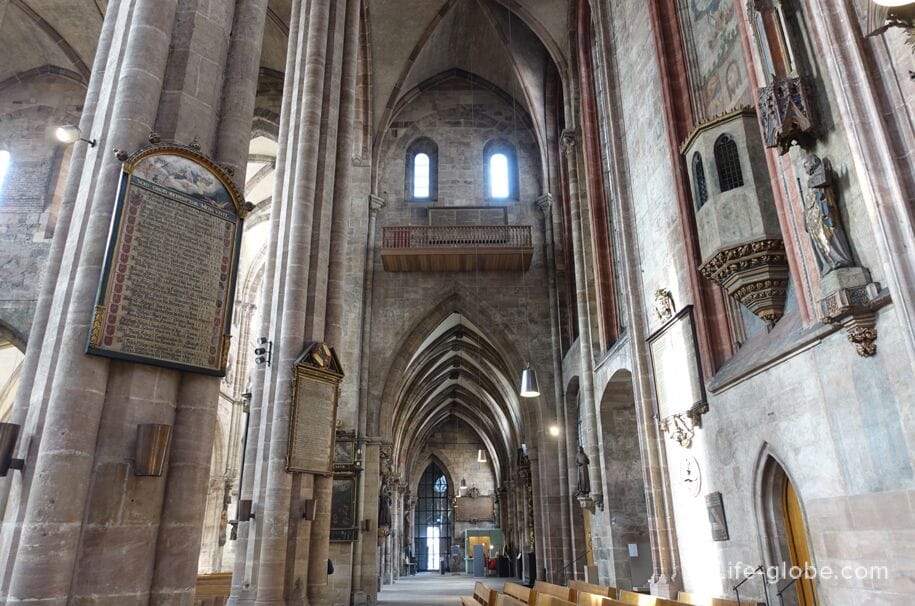
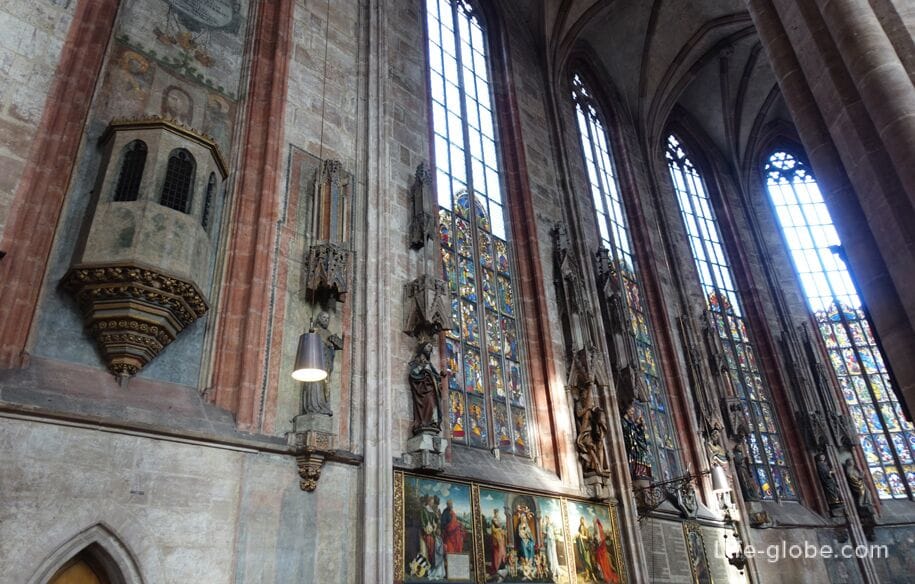

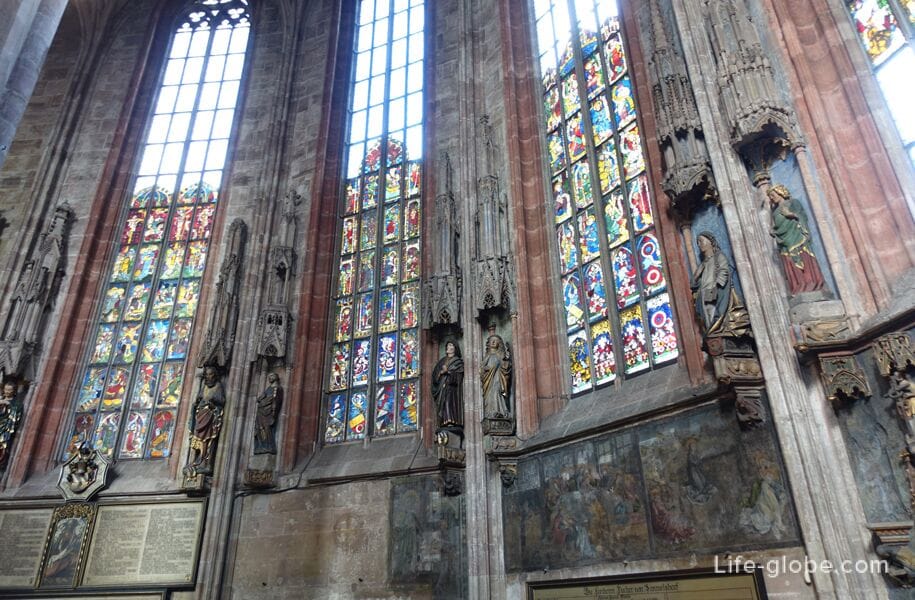
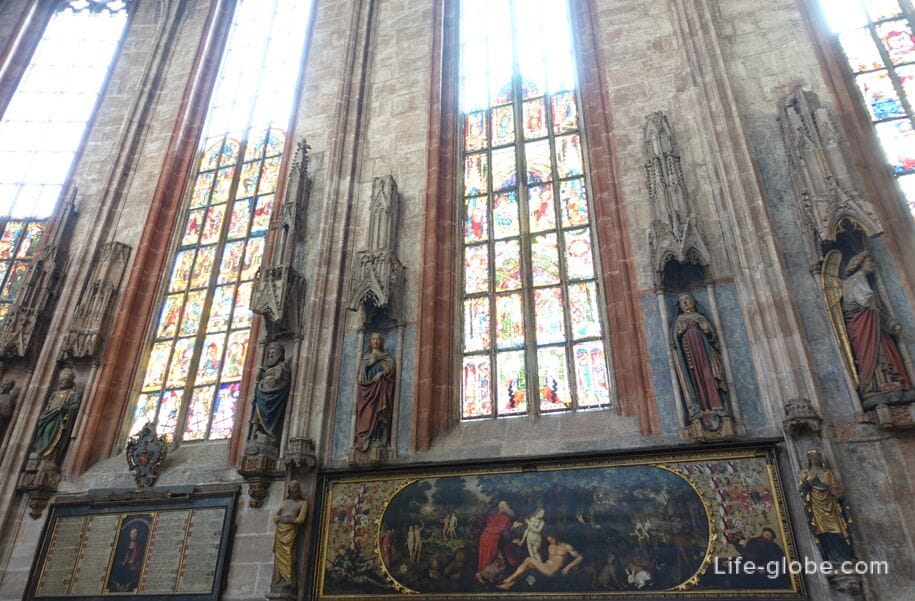
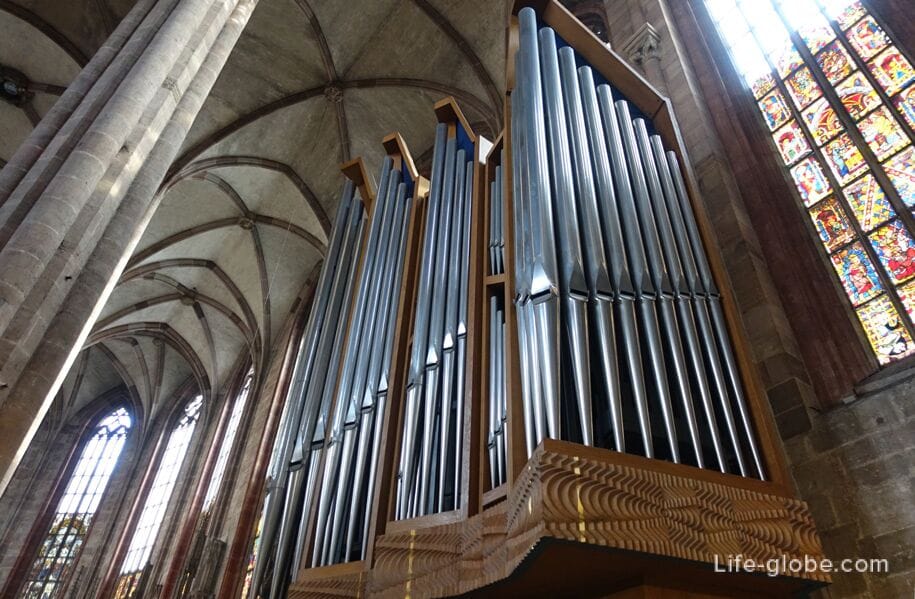
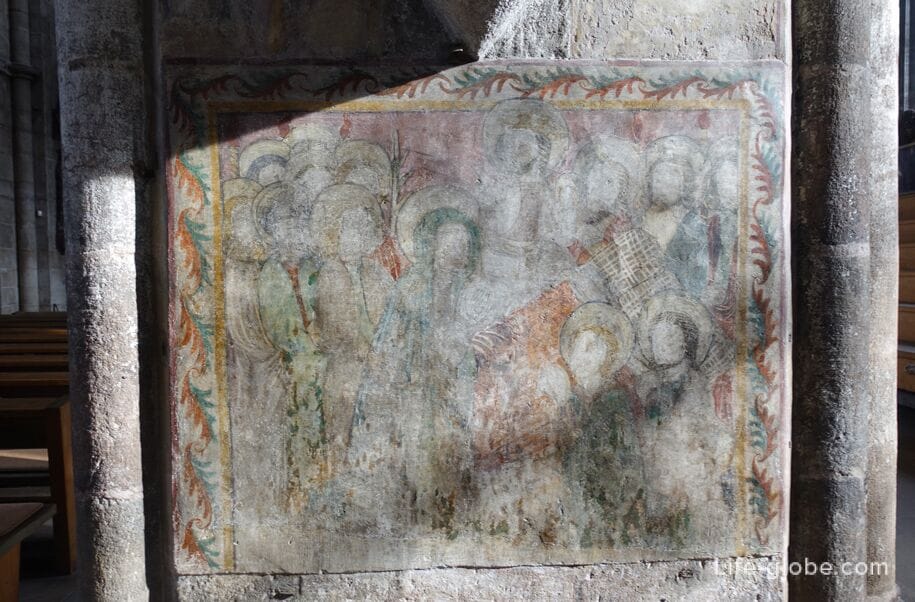
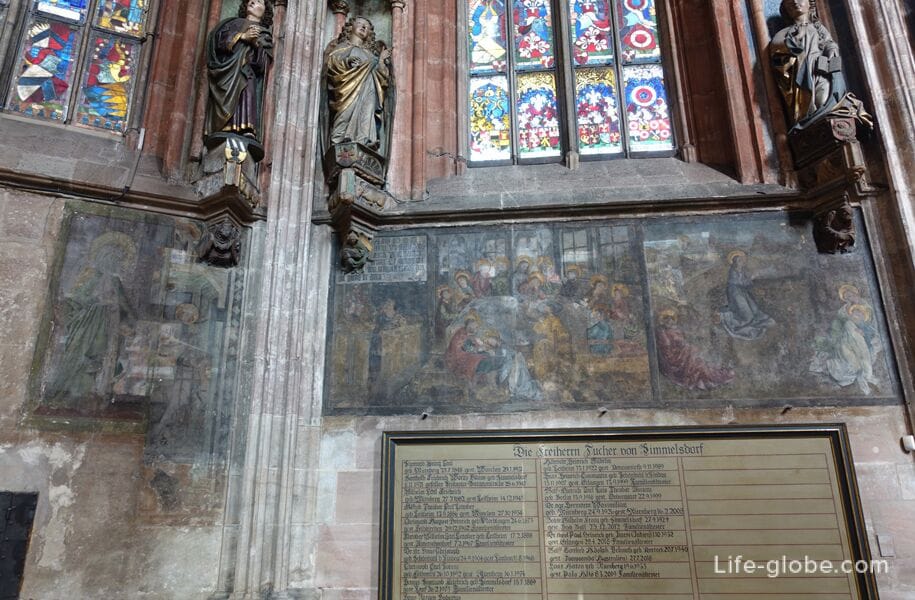


The entrance to the church of St. Sebald is free. Donations are welcome.
The church offers regular church tours and tours of the tower. The south tower of the church offers breathtaking views of the city and - in good weather - the region. During Advent (on Christmas Eve), the view of the Nuremberg Christmas Market "Christkindlesmarkt", which takes place at the foot of the church on the main Market square of the city, is also attractive.
Groups can book tours of the towers all year round by appointment.
St. Sebald's Church is located in the historical center of Nuremberg, next to the main Market square of the city (Hauptmarkt), the "Beautiful Fountain" (Schöner Brunnen) and the Nuremberg Town Hall (Nürnberger Rathaus).
The address of the Church of St. Sebald: Winklerstrasse, 26 (Winklerstraße).
Website of St. Sebald's Church: sebalduskirche.
All accommodation facilities in Nuremberg, including in the city center and near Sebalduskirche, can be viewed and booked here